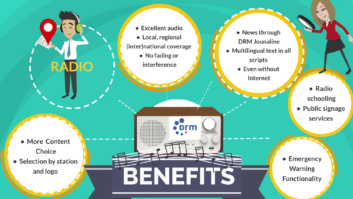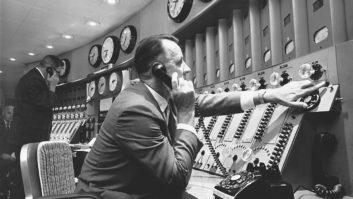This is one of a series of articles and commentaries on AM radio, its challenges and successes.
Reports of the death of AM radio are not only greatly exaggerated but extremely premature.
Recent articles have claimed that AM is no longer “relevant” and that its analog technology keeps people from listening. Experts claim that AM has a small audience share and can’t make money.

Stephen Winzenburg However, in some cities AM is not only alive but is surprisingly healthy. Take a glance at the Arbitrons and you’ll find that almost half of the top 20 markets in America have an AM station ranked No. 1 or No. 2.
In one recent ratings survey, an AM station topped all the FM competitors in audience share in Chicago, San Francisco, Phoenix, St. Louis, Denver, Cincinnati and Cleveland. AM came in a close second in Los Angeles, Atlanta, Tampa and Boston. Even in New York City, four of the top 16 stations were on the AM dial.
It’s true that in the overall listening statistics, 83 percent of listening occurs on FM, but a closer look shows that AM’s erosion is rather slow. The current 17 percent share of the audience is only slightly less the 20 percent AM had 20 years ago. It has been able to retain most of its audience with an increase in formats like talk, sports and Spanish. Considering that owners have abandoned popular music on the AM band, it’s surprising that it hasn’t lost even more market share.
Inside Radio’s count shows that formats with a large majority of their stations on the AM dial are sports, adult standards, ethnic, pre-teen and some religious, such as black gospel. News/talk stations are listed as being 62 percent AM while Spanish radio is now close to a 50–50 split.
Of the 23 predominantly FM formats listed by Inside Radio, many have almost no presence on the AM dial. Rhythmic AC and rock have zero AM stations while alternative rock, classic rock, R&B and CHR have single-digit numbers.
It’s not about audio quality
When I ask students in my college classes if they listen to AM, it’s no surprise that 95 percent say no and many say they have never tuned in to an AM station — ever. The only exceptions are the middle-aged male non-traditional students who enjoy sports and talk.
Young people listen to contemporary music and if there is talk they want it to be funny. That’s because they don’t want to think and they use audio to escape their troubles.
Those in the business who cry over the fact that the young demographic has abandoned AM need to realize that it’s not just due to the analog sound quality — many of them have never even listened to an AM signal to know what kind of quality it is! It’s more about content. They are drawn to the listening device that helps them escape and makes them feel part of their peer group.
Namely, there’s nothing that motivates them to turn to the AM dial because they perceive it to be made up of boring serious talk or music their friends would never be caught dead listening to.
It’s not about audio quality — right now those 20-year-olds are walking around noisy college campuses listening to music coming from tiny earplugs. They are watching three-inch music videos on a laptop with terrible sound. To them it’s about content — they will tune to something worth listening to that their peers are talking about.
The solution is not to give up AM for dead, but to rethink how to attract people to it.
It’s going to take a different model — something like Radio Disney has done in getting pre-teens to turn on the AM dial. Disney has chosen to look beyond the bottom line and use the stations as an opportunity to promote its own recording artists, cable channel and movies. It’s one of the reasons Hannah Montana sells out concerts, the Jonas Brothers have topped the pop charts and the “Wizards of Waverly Place” movie beat almost everything else on television in August.
But when the pre-teens start to grow up, those same listeners have to switch to FM to continue their pop music fix. Why not bring young adult programming back to the AM dial?
Challenge young minds
Start brainstorming options that might draw listeners.
Have music companies program their own stations; put some unusual satellite formats on the AM dial for those who don’t want to pay to listen; program the audio from TV shows that they watch, such as talk shows and games shows; or take the most popular podcasts off the Internet and put them on a broadcast station.
Then challenge the young minds who are the future MTV producers or “Daily Show” writers or Fox animators to create programming that will work for audio. Use AM stations as a training ground for radio by using college kids and high schoolers who can Twitter their friends and promote themselves on Facebook. Many are already doing their own Webcasts or do shows on small non-commercial stations. And schools would love the opportunity to partner with local commercial broadcasters.
Get beyond the idea that “it can’t make money” and realize that there are many radio stations (non-commercial FMs, LPFMs, automated AMs) that can stay on the air despite small budgets. They survive because they serve a segment of the population with programming that someone is willing to support. Now is not the time to give up on AM but instead to do what radio traditionally has done best: Come up with creative new ways to attract listeners.
Stephen Winzenburg is a communication professor at Grand View University in Des Moines, Iowa, and has worked at 16 radio stations, including WHO(AM).
Related:
“AM, and How! Not All Stations on the Senior Band Are Struggling” (Nov. 2009)












